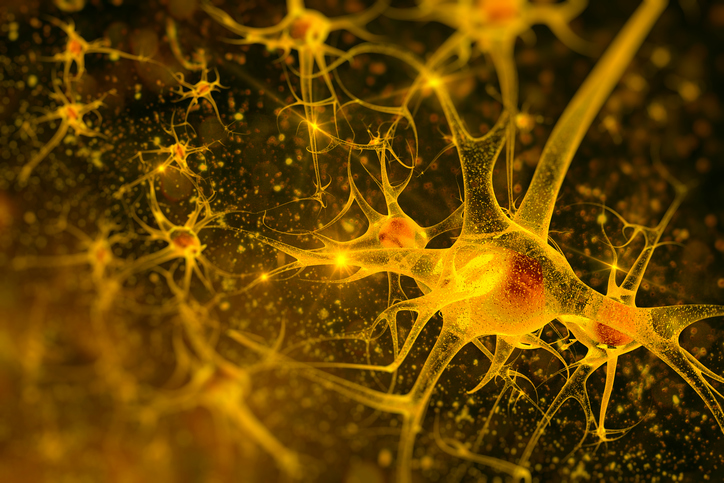
Central nervous system degeneration from brain injury, stroke, or other damage may lead to irreversible neuronal loss. A current promising approach is the conversion of glial cells into neurons. However, during this process many cells die and the process is somewhat inefficient because only a few glial cells convert into functional nerve cells.
Now, researchers at Helmholtz Zentrum München and Ludwig Maximilians University Munich (LMU) report they have discovered the stumbling block towards an efficient conversion: the cell metabolism. By expressing neuron-enriched mitochondrial proteins at an early stage of the direct reprogramming process, the researchers achieved a four times higher conversion rate and simultaneously increased the speed of reprogramming. Their findings will pave the way to advancing neuron replacement and regenerative medicine therapies aimed at neuronal loss.
Their strategy and findings are published in the journal of Cell Stem Cell in a paper titled “CRISPR-Mediated Induction of Neuron-Enriched Mitochondrial Proteins Boosts Direct Glia-to-Neuron Conversion.”
Magdalena Götz, Ph.D., professor and head of LMU department of physiological genomics, Helmholz Center Munich, Institute Stem Cell Research, led the research with her team to investigate possible hindrances to neuronal reprogramming.
“Because changes in mitochondrial proteins have not yet been investigated in neuronal reprogramming, we assessed the similarities and differences in mitochondrial composition for cultured neurons and astrocytes and aimed to improve mismatching during reprogramming by regulating the respective genes by CRISPRa (clustered regularly interspaced short palindromic repeat activation)-mediated transcriptional engineering,” the researchers wrote.
The team decided to study the role of mitochondria and cell metabolism in neuronal reprogramming due to previous work in collaboration with Marcus Conrad’s group at Helmholtz Zentrum München, showing that cells die due to excessive reactive oxygen species in the conversion process.
“We hypothesized that if we were able to help reprogramming the metabolism of glia cells towards the metabolism of a neuron, this could improve the conversion efficiency,” explained Gianluca Russo, first author of the study and a PhD student at LMU.
The researchers extracted mitochondria from neurons and astrocytes of mice and compared them by studying their proteins in collaboration with Stefanie Hauck’s group of proteomic experts at Helmholtz Zentrum München. They discovered that mitochondria of neurons and astrocytes differ in 20% of their proteome.
The researchers noted that they needed to see if and when converting astrocytes acquire the mitochondrial proteome of a neuron or not.
“It was striking that cells showed mitochondrial proteins, which are typical for neurons, relatively late in the reprogramming process, only after one week. Since most cells die before this time, this could be a hurdle. In addition, cells that failed to be reprogrammed, still expressed astrocyte-enriched mitochondrial proteins,” explained Giacomo Masserdotti, PhD, scientist at LMU.
To overcome the hypothesis that the failure of turning on neuronal mitochondrial proteins may be blocking the conversion process, the researchers employed CRISPR/Cas9 technology with Stefan Stricker’s and Wolfgang Wurst’s groups at Helmholtz Zentrum München.
The team gained four times more reprogrammed neurons by manipulating one to two mitochondrial proteins. Continuous live imaging also revealed that the neurons appeared and matured faster.
“I was amazed that changing the expression of few mitochondrial proteins actually drives the speed of reprogramming,” added Götz. “This shows how important the cell-type-specific differences of mitochondrial proteins are. And indeed, together with our proteome experts at Helmholtz Munich, we are discovering further organellar differences between cell types that reach up to 70%. This will pave the way to further improve the reprogrammed neurons to resemble as much as possible endogenous neurons also after brain injury in vivo.”













